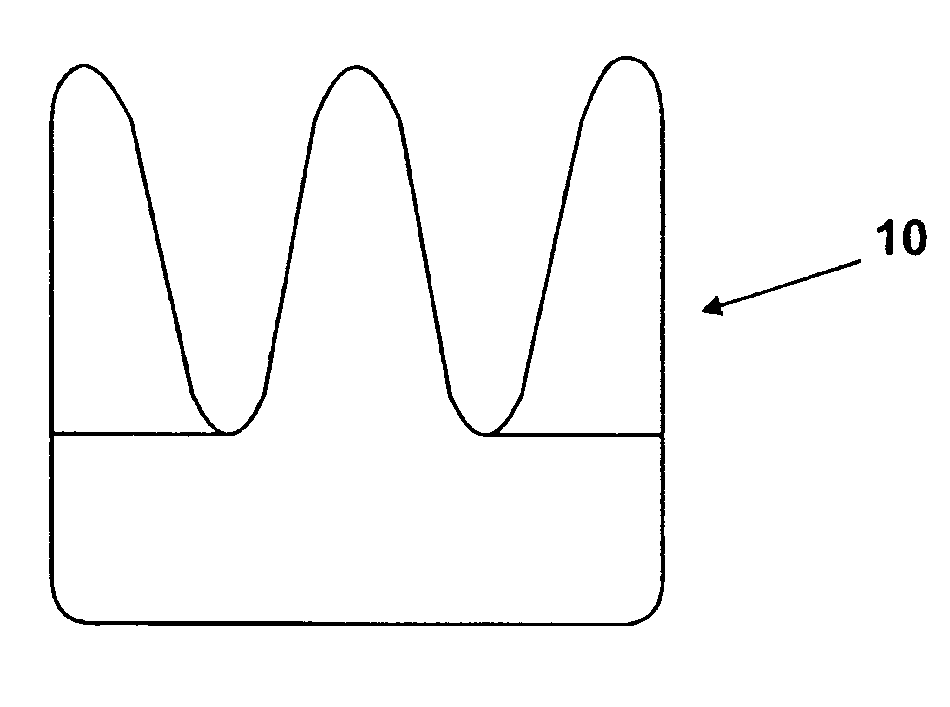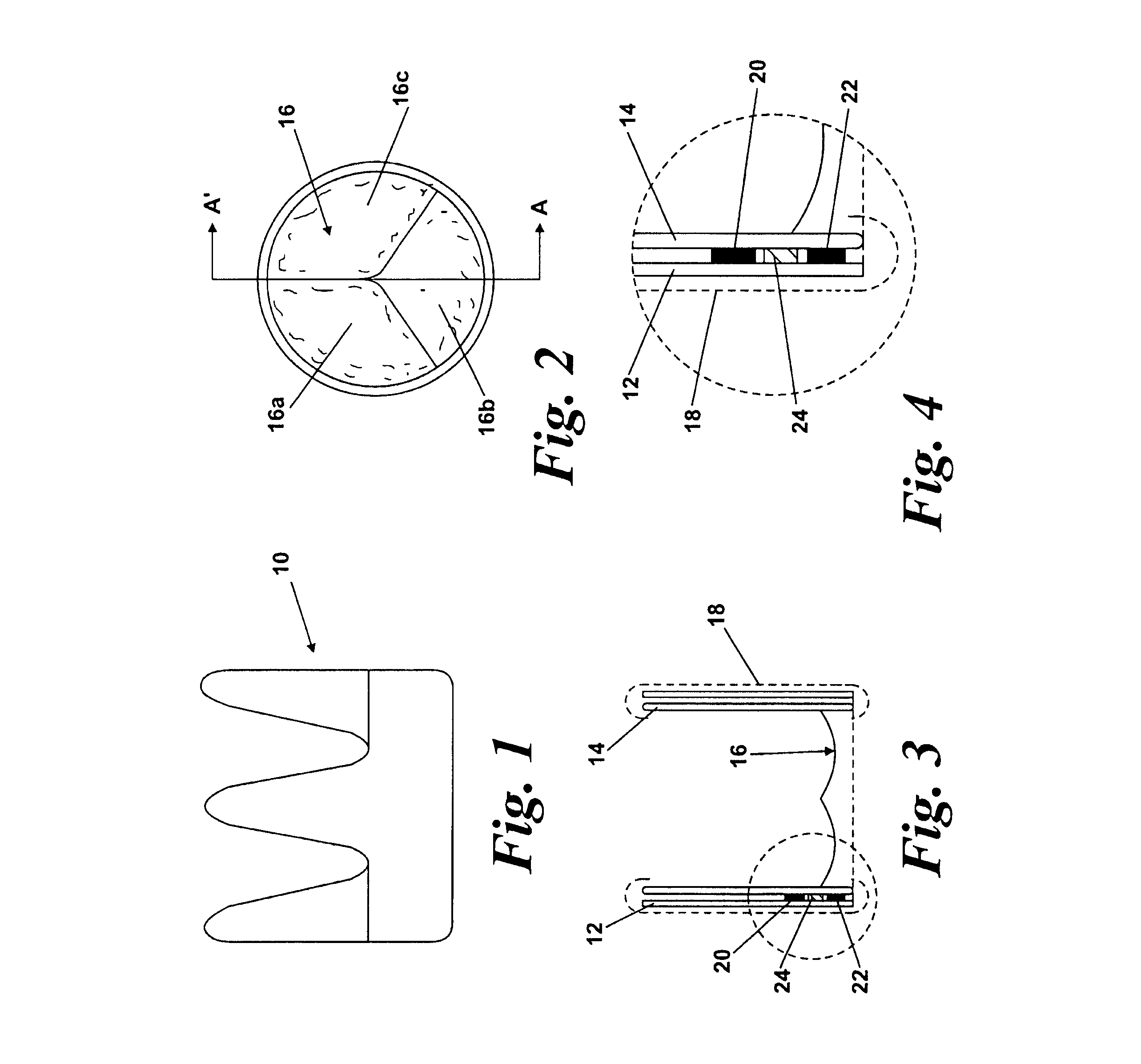Medical devices
a technology of medical devices and devices, applied in the field of medical devices and systems, can solve the problems of increasing the number of problems associated with known heart valve devices, difficult to implant, and difficult to size properly
- Summary
- Abstract
- Description
- Claims
- Application Information
AI Technical Summary
Benefits of technology
Problems solved by technology
Method used
Image
Examples
Embodiment Construction
[0048]FIGS. 1-4 show a first embodiment of a heart valve 10 according to the invention. The heart valve 10 is a stented tissue valve comprising a stent 12 which supports a tissue valve wall 14 obtained from a suitable source. Typically, porcine tissue valves are utilized. The tissue valve 10 further comprises a valve 16, the valve 16 being made up of three tissue leaflets 16a, 16b, 16c. Typically, a protective cover 18 is provided around the periphery of the valve wall 14 / stent 12. The cover may be produced from any suitable material: typically, a polymeric sheet material such as Dacron (RIM) is used, although the invention is not limited in this regard. As shown to best effect in FIG. 4, the tissue heart valve 10 further comprises a first sensor 20, a second sensor 22, and telemetric communication means 24, all of which are disposed in the cavity provided between the valve wall 14 and stent 12. This location is extremely convenient, since blood flowing through the tissue heart valv...
PUM
 Login to View More
Login to View More Abstract
Description
Claims
Application Information
 Login to View More
Login to View More - R&D
- Intellectual Property
- Life Sciences
- Materials
- Tech Scout
- Unparalleled Data Quality
- Higher Quality Content
- 60% Fewer Hallucinations
Browse by: Latest US Patents, China's latest patents, Technical Efficacy Thesaurus, Application Domain, Technology Topic, Popular Technical Reports.
© 2025 PatSnap. All rights reserved.Legal|Privacy policy|Modern Slavery Act Transparency Statement|Sitemap|About US| Contact US: help@patsnap.com



